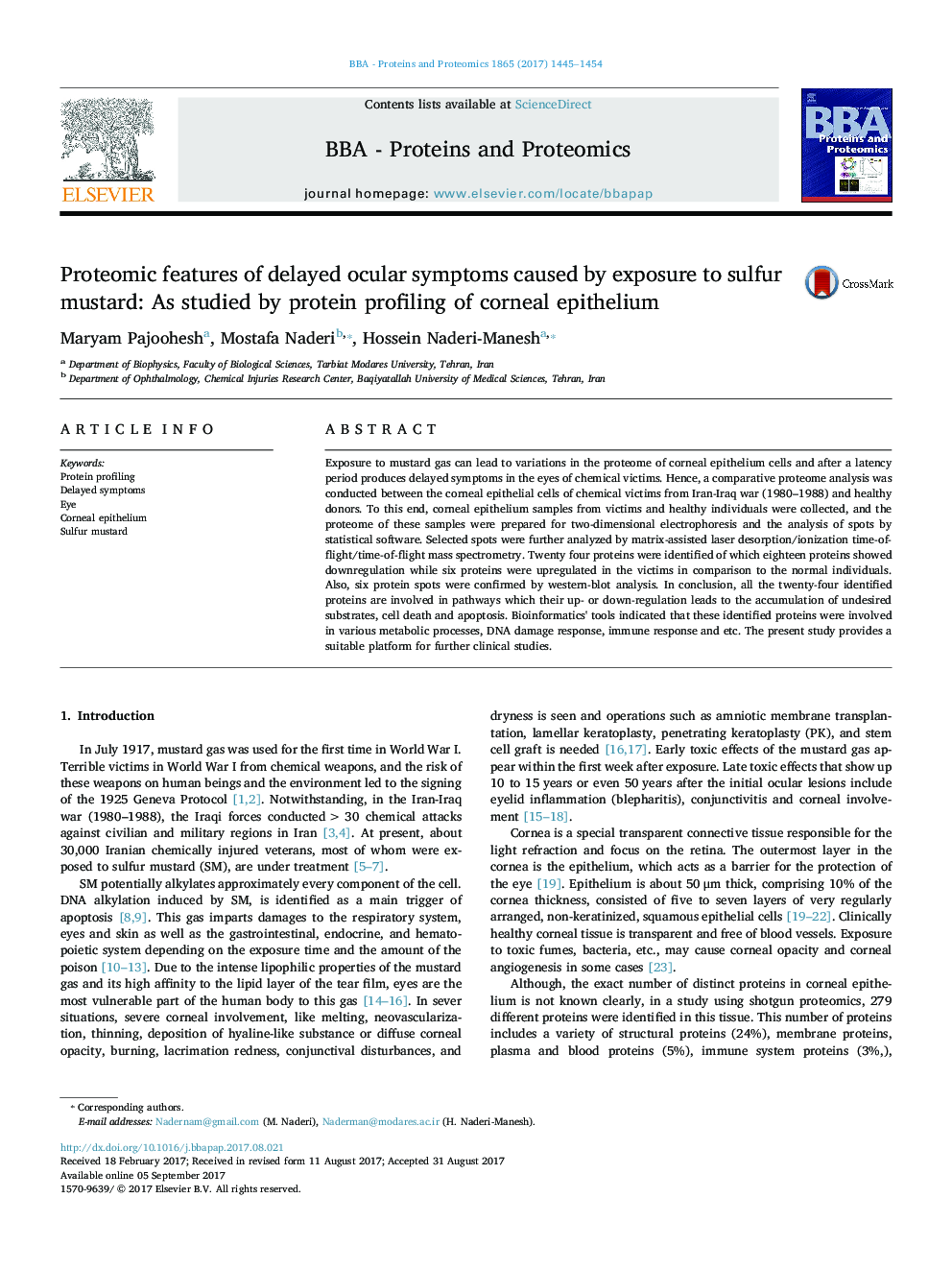| Article ID | Journal | Published Year | Pages | File Type |
|---|---|---|---|---|
| 5131875 | Biochimica et Biophysica Acta (BBA) - Proteins and Proteomics | 2017 | 10 Pages |
â¢Exposure to mustard gas can change the proteome of corneal epithelium cells.â¢Comparative proteome analysis between chemical victims and normal individualsâ¢Two-dimensional electrophoresis and the analysis of spots by statistical softwareâ¢24 proteins were changed in the victims in comparison to the normal individuals.â¢Provides a suitable platform for further clinical studies
Exposure to mustard gas can lead to variations in the proteome of corneal epithelium cells and after a latency period produces delayed symptoms in the eyes of chemical victims. Hence, a comparative proteome analysis was conducted between the corneal epithelial cells of chemical victims from Iran-Iraq war (1980-1988) and healthy donors. To this end, corneal epithelium samples from victims and healthy individuals were collected, and the proteome of these samples were prepared for two-dimensional electrophoresis and the analysis of spots by statistical software. Selected spots were further analyzed by matrix-assisted laser desorption/ionization time-of-flight/time-of-flight mass spectrometry. Twenty four proteins were identified of which eighteen proteins showed downregulation while six proteins were upregulated in the victims in comparison to the normal individuals. Also, six protein spots were confirmed by western-blot analysis. In conclusion, all the twenty-four identified proteins are involved in pathways which their up- or down-regulation leads to the accumulation of undesired substrates, cell death and apoptosis. Bioinformatics' tools indicated that these identified proteins were involved in various metabolic processes, DNA damage response, immune response and etc. The present study provides a suitable platform for further clinical studies.
Graphical abstractDownload high-res image (159KB)Download full-size image
